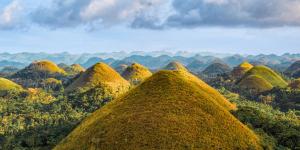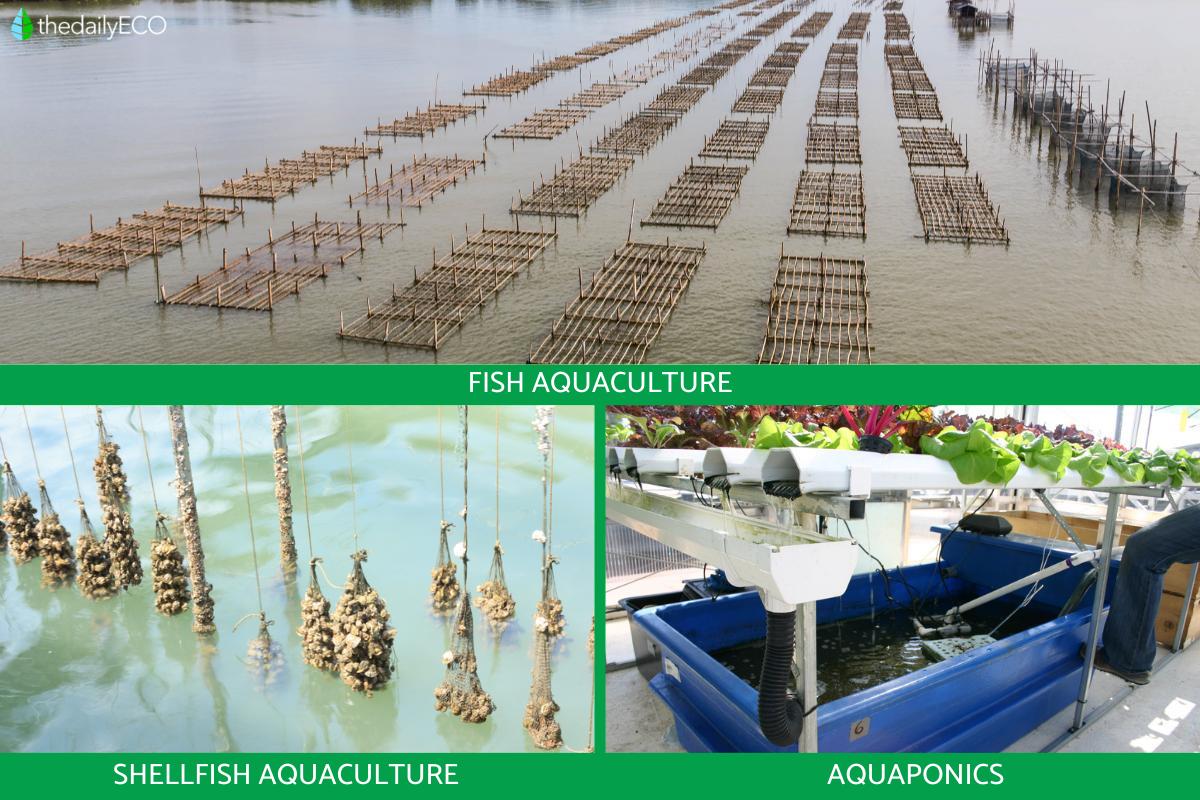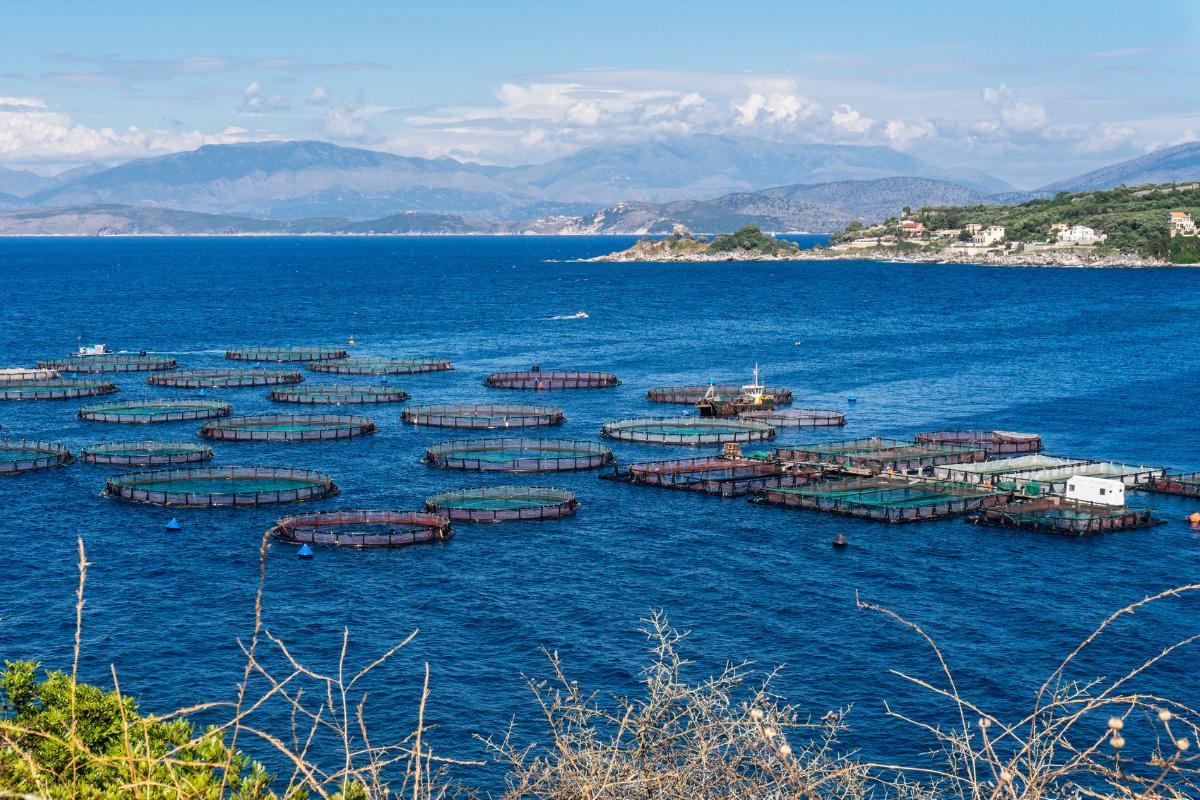What Is Aquaculture in Agriculture?


Aquaculture is a set of activities, techniques and knowledge on the cultivation of aquatic plant and animal species. Different areas will have their own specialized crops and livestock depending on their requirements. As a farming model, aquaculture provides many advantages such as reducing the overexploitation of fishing resources, but it also includes some disadvantages such as pollution and its effects.
thedailyECO explains what is aquaculture in agriculture? We look at the advantages and disadvantages of aquaculture to better know how it might benefit or harm worldwide ecology.
What is aquaculture?
As with other types of agriculture, aquaculture is a source of animal and plant products. While terrestrial farming provides terrestrial crops and livestock, aquaculture provides aquatic plants and animals. The definition of aquaculture by the UN Food and Agriculture Organization (FAO) is:
The cultivation of aquatic organisms, including fish, mollusks, crustaceans and aquatic plants
In aquaculture, human intervention in aquatic ecosystems has led to the development of a series of techniques and activities which manipulate natural growth and development. Other forms of agriculture do the same thing. They ensure development, increase production, provide nutrition and protect against predators. They simply do them in an aquatic, rather than a terrestrial environment.
Learn more about aquatic ecosystems in general with our related article.

Types of aquaculture
There are different types of aquaculture. Each focuses on the different farming techniques used or the different species that are produced. Among them we can highlight:
Fish aquaculture
- Fish farming: raising and cultivating fish in ponds, floating cages or recirculating systems for human consumption or to repopulate wild populations.
- Salmon farming: specifically dedicated to the cultivation of salmon in salt or fresh water floating cages.
- Trout aquaculture: focuses on the breeding and culture of trout in cold and warm waters.
Crustacean aquaculture
- Shrimp farming: shrimp farming in ponds or controlled systems.
- Crab aquaculture: involves the farming of various species of crabs, such as crayfish or mangrove crab.
Shellfish aquaculture
- Oyster farming: farming of oysters in the open sea, bays and estuaries.
- Mussel farming: production and culture of mussels on ropes or suspended structures.
Seaweed aquaculture
- Algiculture: cultivation of various species of marine and freshwater algae for different purposes (food, medicine or industry). Learn about natural algae production with our article on kelp forests.
Integrated aquaculture
- Aquaponics: this type of aquaculture combines the production of fish with the hydroponic cultivation of plants, using the waste from the fish as nutrients for the plants.
Ornamental aquaculture
- Aquarium hobby: farming and breeding of ornamental fish, invertebrates and aquatic plants for the home aquarium trade.
Experimental aquaculture and research:
- This type of aquaculture focuses on the research and development of new techniques and studies of little-known or threatened species, as well as the improvement of sustainability in aquaculture.

Advantages of aquaculture
As with all forms of industrial enterprise, there are positives and negatives to their production. Here we look at the advantages of aquaculture:
- Food security: aquaculture helps meet the growing global demand for food.
- Controlled Production: by rearing aquatic organisms in controlled environments, optimal growth conditions can be maintained, increasing efficiency and reducing risks associated with adverse environmental factors.
- Species Conservation: aquaculture contributes to the conservation of endangered species by creating breeding populations and releasing individuals into the wild.
- Reduced capture fisheries: by increasing the production of aquatic foods through aquaculture, the pressure on wild fish populations is reduced, helping to conserve marine ecosystems.
- Resource efficiency: aquaculture can be more efficient in the use of resources such as water compared to traditional agriculture, especially in recirculating and aquaponics systems.
- Economic opportunities: aquaculture offers employment opportunities and economic development in coastal and rural communities, helping to improve quality of life of people in local communities.
- Technological innovation: the aquaculture industry has promoted the development of advanced technologies for monitoring, water quality control, nutrition and species management. These can also benefit other research areas.
- Product diversification: aquaculture allows the production of a wide variety of species, which facilitates the diversification of the supply of food and derived products.
- Lower environmental impact: compared to certain capture fisheries practices, aquaculture can have a lower environmental impact as long as it is done in a sustainable and responsible way.
Learn about terrestrial farming with our article on the difference between organic and natural food.

Disadvantages of aquaculture
Despite all the advantages mentioned above, it would not be fair to ignore the disadvantages and challenges that must be addressed. Doing so will help make this practice sustainable and reduce its negative impact on the environment. Among them we can highlight:
- Water pollution: intensive aquaculture can lead to a buildup of nutrients and chemicals in the water.
- Disease transmission: the high density of organisms in aquaculture facilities can favor the spread and outbreak of diseases, affecting the populations themselves, as well as wild organisms.
- Use of antibiotics and chemicals: antibiotics and chemicals can be used in aquaculture to both treat and prevent disease. These can have negative effects on the environment and human health if not managed properly.
- Escape of cultivated species: if they are invasive species, they can compete with wild populations and alter local ecosystems.
- Resource consumption: intensive aquaculture can require large amounts of resources, such as fresh water, energy and feed, which can put pressure on these scarce resources.
- Loss of natural habitats: construction of aquaculture facilities can lead to the destruction of natural habitats such as mangroves and wetlands. Learn more about the importance of mangroves in our related article.
- Dependence on fishmeal and fish oil: many farmed species are fed on fishmeal and fish oil, which may have implications for the sustainability of the capture fisheries used to produce these resources.
- Change in genetic diversity: large-scale aquaculture can limit the genetic diversity of farmed populations, making them more vulnerable to disease and other environmental factors.
- Conflicts with capture fisheries: aquaculture exploitation can conflict with traditional capture fisheries, especially in areas where resources are limited. This can affect local human populations by taking jobs and reducing their livelihoods.
Now that you know what aquaculture is and know its advantages and disadvantages, you may also be interested in our article on what is the Blue Economy?

If you want to read similar articles to What Is Aquaculture in Agriculture?, we recommend you visit our Environment (other) category.








